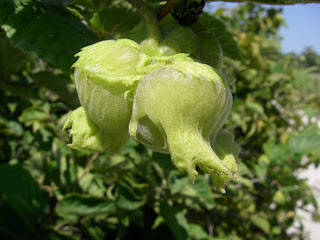Well, we're back. And, the worst has happened. We have tomato blossom end rot. This is bad. It has, so far, attacked only the heirloom tomatoes I got from my aunt, which are separate from the other tomatoes and potatoes. (And which were,
btw, the healthiest looking of all our tomatoes before the fruits turned up with black, moldy ends.) We have sprayed them with copper, but chances are... these plants are goners. Won't get one single
fruit out of them. I just hope it doesn't spread to the others.
Regarding our trip, I could go on for a while. We took a million or so photos, which I have yet to sort through; we saw some lovely natural areas and gardens and parks. I may or may not get around to describing or posting photos from any individual locations. But for now, some overall (tongue in cheek) impressions.
I love the American landscape. The ruggedness of it, the expansiveness. The harshness. I am enamoured with, and remorseful for, the history of this young nation; I can't imagine (and don't want to) a world without cowboy and Indian lore, Lewis and Clark adventures, the wild wild west, the rolling prairie that seems to stretch on like an ocean. But visiting England, I can't help but think... that religious persecution must have been really bad, because it would have to be to make you leave an ancestral home such as that. Mosquitoes? Not so much. In private residences and hotels alike, windows didn't have screens. They just open them. Ticks? Don't think so. Strawberry season? Still going on. Although. Tomato season? Not yet, likely due to the not at all how weather. A striking difference from the three-digit (F) temperatures we're supposed to have here tomorrow. Irrigation? Hardly ever necessary, I'd guess, because it seemed like it sprinkled pleasantly a lot. (And occasionally, not so pleasantly). Snow? Pretty rare, I'm told. Which is actually a negative point, in my book. I like snow. But I know that the moderate climate (this despite the high latitude, mind you) would be a positive point to many out there.
And I totally get where our whole completely unnatural fetish with green-grass lawns came from. It's not so totally unnatural and hard to maintain over there. We did note an interesting garden phenomena, though... When you visit the grand estates with spectacular gardens, many of them have plant stores there, so that you look at the gardens, feel inspired, and spend a lot of money buying plants, thinking you can do the same thing on your home on a smaller scale. Forgetting, of course, that the grand estates hire full time gardeners. And that's not plural because there are multiple estates, but because each one, I'm certain, has multiple gardeners. Anyhow, I have gotten away from the main point, which is that the most popular plant to purchase? Is the purple coneflower. Which is native to the North American prairies. So there you have it, folks.
Another cool thing about said estates is that at most of them, there is a restaurant. And these restaurants feature food grown on that estate or in the county. I'm not going to try and say that English folks are all into local foods; besides being a gross generalization, I only spent 8 days there and really didn't get that much data. But it seems to be a wee bit more important there than here. And Charles (as in Prince) is really big on local foods and sustainable agriculture, so that was exciting to learn about. At any rate. You know that when you travel to Italy or Morocco, to Mexico or Thailand, you are going to notice how much the USA lacks a food culture. Beyond the fast/convenience. But I certainly didn't expect to to be that evident from a trip to England.
OK. I have now been awake for about 21 hours, and travelling for much of that. So I'm tired (but I WILL stay awake til normal bed time) and probably not being that coherent and will sign off now.
 In the world of plants... there will not be too many more first blooms to report in 2009, but here is one of those that remains. Mistflower, which gives my yard one of its last jolts of purple, has gotten its color and started to open, though it is not fully bloomed yet.
In the world of plants... there will not be too many more first blooms to report in 2009, but here is one of those that remains. Mistflower, which gives my yard one of its last jolts of purple, has gotten its color and started to open, though it is not fully bloomed yet.


































